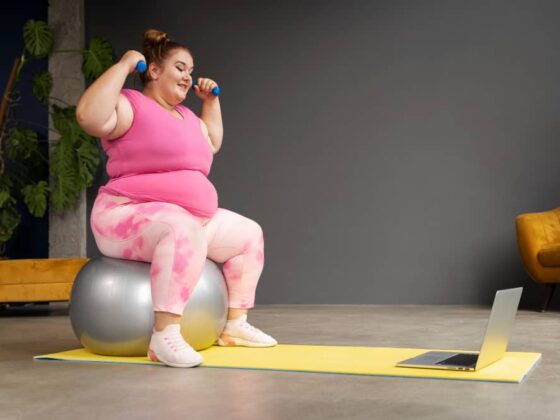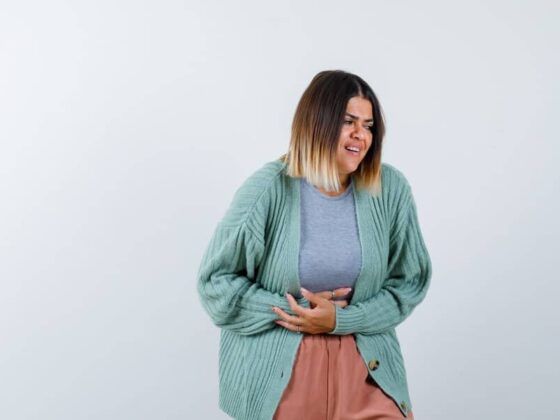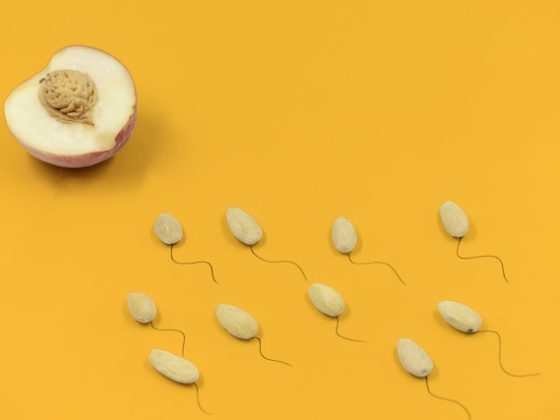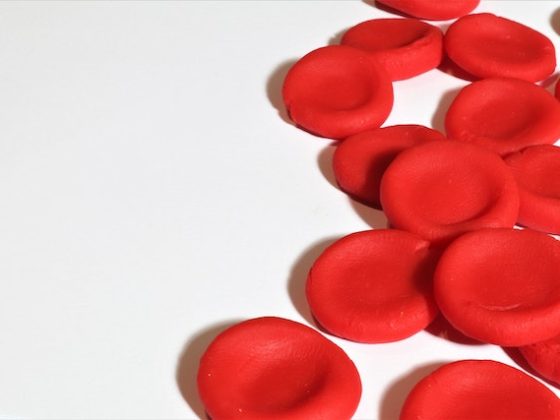Hey there! This post may contain affiliate links. As an Amazon Associate, I earn a teensy commission from qualifying purchases when you buy through these links (at no additional cost to you). For more info, please check the full disclaimer.
A couple of years back, I got the shock of my life after discovering I had various telltale signs of iron deficiency. It was scary, but it helped me put my health and well-being in perspective.
At the time, I didn’t know exactly how essential iron was for our body.
Even though many women experience symptoms of iron deficiency, it’s still one of the least discussed topics in the health industry.
Women are at a high risk of iron deficiency anemia, which can mess up their health. Sadly though, it often goes undiagnosed, and then dangerously low iron levels impact their physical and mental wellbeing.
This is why it’s important to spread awareness about the effects of iron deficiency so you can recognize the indicators and take action right away.
In this blog, you’ll learn about the ways to recognize low iron levels in women. Let’s get right to it.
What is Iron Deficiency?
The initial iron deficiency symptoms occur when your body fails to produce optimal levels of mineral iron.
You need iron to generate hemoglobin in red blood cells (RBC). The scarlet RBC color comes from this iron-rich protein that carries oxygen to the body organs via blood.
Long-term low levels of iron lead to a serious condition called iron deficiency anemia (IDA). It limits red blood cell production and diminishes fresh oxygen supply to organs.
About 9% of women in the US suffer from iron deficiency signs, making it one of the top causes of anemia.
In developing countries, the percentage is a LOT higher. They have poor access to healthy nutrition and are ill-equipped with basic health amenities.
Read More: 8 Scary Signs of Vitamin B12 Deficiency in Women
What is The Normal Iron Range for Females?
Both insufficient or extra iron absorption can be detrimental to your health.
The normal range of iron for females is between 50 to 170 μg/dl. Anything less than this might result in severely low levels of iron.
The normal range for ferritin in women is between 30 μg/ml and 300 μg/ml. The average ferritin levels for women are higher than 40 μg/ml. If the ferritin levels are lower than 15 μg/ml, you might notice some symptoms of iron deficiency anemia.
Experts agree that, ideally, women need about 3.5 grams of iron. Almost 70% of this iron is in hemoglobin, while the rest is in muscle proteins or the liver.
Now that’s the story of low iron levels.
But what if you have excess iron in your body?
A genetic condition known as hemochromatosis leads to higher absorption of iron during food intake. This extra iron is stored in the liver, pancreas, and heart.
This rare disease is one of the major causes of enlarged liver, liver cancer, failed liver function, and neurological problems such as vision impairment, mood swings, and depression.

What Are the Causes of Low Iron Levels?
Numerous factors lead to low iron deficiency. Certain unhealthy habits and lifestyle practices can affect your body’s ability to absorb iron from foods. As a result, you might notice serious iron deficiency symptoms.
Here are the possible causes of low iron in women:
- Insufficient iron intake
- Family history
- Ethnicity
- Age
- Injuries that cause loss of blood
- Pregnancy
Interestingly, certain drugs are linked to a build-up of iron. Study shows that cocaine consumption accumulates iron in the brain, causing serious harm later on.
Another research shows that using non-aspirin pain relief pills (NASAIDS) is also a risk factor for serious symptoms of iron deficiency.
How Can You Raise Your Low Iron Levels Quickly?
Besides consulting a health professional, you should add iron-rich foods to fulfill the need.
I bet you already know about green vegetables like spinach, broccoli, and kale, being the best food sources rich in iron.
Besides, many types of meat are also popular foods with high iron, such as red meat, chicken, and turkey. Nutritionists also recommend eating nuts and dried fruits to boost low iron levels quickly.
Some women add grains and herbs to their iron-rich diet plan. They contain compounds crucial for increasing hemoglobin production.
I would also suggest trying some authentic iron supplements to deal with the dangerous symptoms of iron deficiency.
Now without further ado, let’s move on to the different symptoms of iron deficiency in women you need to look out for.
Read More: 100 Best Iron Rich Foods You Should Eat Daily
The first thing you must know about low iron levels is that it sneaks up on you. You may notice subtle physical and mental changes or nothing noticeable at all.
This makes iron deficiency anemia all the more dangerous for your wellbeing.
The earlier you identify the warning symptoms of iron deficiency, the faster you can start natural treatments to manage this condition.
Here’s a list of 10 signs of iron deficiency in women.
1. Abnormal menstrual bleeding
A study found that about 10% of iron deficiency cases occur because of problems in menstrual bleeding.
During the menstrual cycle, heavy bleeding — aka menorrhagia — results in severely low iron levels.
This is one of the common signs of low iron, particularly in women aged 20+ years.
If you’re confused about what heavy bleeding refers to, here’s a pro-tip by Cemcor.
Women usually lose about 35ml of blood during a cycle. Any sanitary product (including tampons or pads) can soak up to 5ml of blood.
If you use more than 7 products during a cycle, there’s a high risk of low iron levels.
2. Extreme fatigue
Because of the iron shortage, your organs don’t receive enough fresh oxygen supply. As a result, you experience abrupt weakness.
Untreated ferritin low levels can also lead to stinging muscle pain.
According to the American Society of Hematology, symptoms of decreased iron reduce energy production in mitochondria, also known as the energy center. This leads to impaired muscle movements.
If you feel strangely tired at odd times, it might be a sign of low iron.
3. Improper bowels
Improper bowel movement is yet another alarming symptom of severely low iron.
However, it’s more pronounced in people with a chronic digestive illness.
For instance, Celiac disease, Crohn’s disease, and autoimmune gastritis are a few intestinal problems leading to alarming symptoms of iron deficiency anemia.
Frequent episodes of bloating or diarrhea are also symptom of low iron that you need to take seriously.
Besides, if you feel increased pressure in the abdominal region or relentless pain, you might have some internal bleeding. Get it treated to avoid severe iron deficiency symptoms.
4. Skin and tongue paleness
This is perhaps the most common sign of iron deficiency in women as well as children.
Iron deficiency for a long time may result in anemia, leading to red blood cell shortage. It reduces the redness/pinkish tinge of your skin and makes it pale.
Similarly, a pale tongue is also one of the leading iron deficiency symptoms. Low iron levels affect the iron-absorbing proteins in your tongue called myoglobin. This makes your tongue appear whitish.
Dehydration, such as dry mouth corners, also indicate decreased ferritin in your body.
5. Low body temperature
Fresh oxygenated blood supply keeps your body warm. But because of low iron deficiency anemia, limited blood is delivered to your hands and feet.
As a result, you might feel sudden chills, even during hot weather, accompanied by shivering and subtle tingling or numbness in your limbs.
If you feel unusually cold during the day and night, this is one of the most serious signs of anemia in women.
6. Nail ridges and brittleness
Abnormally shaped nails with inward depression or ridge are also symptoms of severely low iron.
In some cases, women may notice nail brittleness causing them to break easily. However, this is more common in aged women.
Look out for any subtle symptoms of anemia in your nails and timely combat the deficit.

7. Bruises
Have you noticed any big bluish-purple skin marks that appeared out of nowhere?
These are alarming early symptoms of low iron. At times, your skin could get too itchy as well.
Another crucial thing to note is whether the bruises are painful or not. Marks of iron deficiency are often painless.
The same happened to me. One day a weird bruise emerged on my limb. It was too strange because I didn’t remember bumping anywhere.
Naturally, I ended up forgetting about it.
Had I known bruising indicated low iron levels, I could have been more proactive about my treatments right away.
If you notice random bruises, you might want to take them as serious symptoms of low iron levels.
8. Headaches
Decreased ferritin levels cause intense weakness including headaches. Recurring episodes of dizziness and head pressure could mean that you’re severely low on iron.
Headaches are also signs of iron deficiency in pregnancy.
That’s because you now have a limited fresh blood supply to the brain, creating increased pressure on blood vessels. As a result, you’ll have extreme headaches.
You might want to make note of this factor particularly if you don’t often suffer head pressure problems.
9. Nausea
Vomiting and nausea are symptoms of anemia that you should NEVER ignore.
In fact, most pregnant women with low iron experience this symptom of anemia. Continuous morning sickness often indicates this issue.
Severe cases of iron deficiency anemia lead to heartburn and feeling sick to your stomach. It’s also possible to lose your appetite in the process.
Read More: 25 Best Foods for Pregnancy Heartburn Relief
10. Shortness of breath
Since low iron levels affect hemoglobin content, it decreases oxygen supply to your vital organs.
This results in a high breathing rate. Meaning, you’d start heaving after doing even a light chore or routine task. This condition is also known as shortness of breath when your body’s demanding fresh oxygen.
If you notice this iron deficiency symptom, it’s alarming and needs your attention ASAP.
The Bottomline
I hope this article gives you a clear idea about how to recognize low iron levels in your body.
It’s important to look out for these symptoms of anemia in your body and get the right treatment on time. Otherwise, it could lead to serious health risks.
Have you suffered from iron deficiency? Share your experience with me in the comments below.
References:
- https://www.hematology.org/Patients/Anemia/Iron-Deficiency.aspx
- https://ashpublications.org/blood/article/118/12/3191/28774/Ironing-out-fatigue
- https://share.upmc.com/2018/03/brittle-nails-causes-treatments/










28 comments
This is very helpful! The only two symptoms of iron deficiency that were ever presented to me were fatigue and craving ice.
Thanks! And yes, fatigue is the only symptom most of us know about, but in reality, iron deficiency has many other risks.
Wow, this is such valuable information! Thank you for sharing!
Thanks Rose, glad you find it useful! 🙂
Thanks for this. I’ll be sharing it with my wife.
Thanks, that’d be great! 🙂
This post really gives us some good information. I knew about fatigue but not most of the other systems. I was severely deficient at one time and had most of these symptoms but was clueless. Thanks so much for making me aware!
Thanks, Heather! We really need more awareness on this subject.
Some of this I had read before, but some of it was definitely new! Thank you!!! We women really should be well informed about this.
Glad you found the info helpful, Michelle! 🙂
Honestly i’am not good at reading but your blog is really easy to understand, thanks for sharing…
Nice Info dear. Great article being shared by you. Really informative, helpful.
Thanks so much! 🙂
My anemic experience was one that resulted in a visit to the ER. I was getting treated for a respiratory illness that I couldn’t get over. It was around the time I believe I was beginning my menopause. After another visit to the Dr. to address my constant fatigue, shortness of breath, constant small coughs, runny nose and brain fog, I was told I should go visit a psychiatrist. While I didn’t appreciate this advise, he did run a blood test. The very next day, after the Dr. office received the lab results, I was urged to go to the ER. Three blood transfusions later, I was able to walk without my legs burning and having to stop to catch my breath. I forget my oxygen number but it was in the single digits. This was followed by many visits to an Oncologist to rule out cancer. I experienced cravings for ice and dirt and struggled with fatigue for many years. I’ll never dismiss any of these signs again. My concern now, is how this may have effected my thyroid and brain function, having been deprived of adequate oxygen & iron levels for so long.
So sorry to hear about your experience Catherine, can’t even imagine how frustrating it must’ve been for you. Although I hope it didn’t have any lasting consequences, if there are any thyroid issues, you’ll notice the symptoms right away. If you still feel lightheaded or have shortness of breath, you might want to get your thyroid levels checked.
Thank you so much for this easy to read and understand, valuable info,.
I wonder if anyone with low iron has had a craving for salt? I have noticed in the last year, I have to have bit of sea salt, like raw, on my finger, everyday. That sounds weird right? My iron number is 6 right now and I am in the middle of some tests and Dr. Consults.
My daughter (22) has recently finished a series of 4 iron infusions at the Hospital as her numbers were so low. The symptoms you have listed are exactly what she had experienced. I have noticed myself with really brittle nails, extreme fatigue, temperature sensitivity and dizziness.
Thank you for your advice.
Hey Tammy, thanks for your kind words. Yes it’s possible to get ‘salt cravings’ from low iron levels. Anemia often causes dehydration, leading to salt cravings and cold skin. This symptom could intensify in hot weather so make sure you’re drinking sufficient water. It could get better after iron replacement therapy.
My cycles have always been long and growing up the doctors would just give me pain medicine. I knew my iron was low cause I could never donate blood. Recently I started seeing dark purple bruising on both of my arms and it scared me but I ignored it then I noticed it was trying to start on my legs and I starting seeing my veins on my arms and I never have. My mom told me take some iron and it’s only day 3 and my bruising is disappearing and I feel better. I’ve had shortness of breath, fatigue, bruising, hard to concentrate, hot flashes even when it’s cold etc for about a year… I’m just glad I took it seriously soon cause they say I could’ve died in my sleep cause it was getting really bad. Doctors should check for low iron when women come in for long/painful periods instead of just giving us medicine or convincing us to take birth control. 1 day after taking iron pills and I started my cycle. I’ve been on birth control since I was 10 so the birth control was just making my iron worst 🤦🏾♀️. This thread is very helpful. Thank you
Oh, I’m so sorry to hear that, Keiya. You’re so right, doctors should ask the right questions and focus on other complications that heavy periods might be causing. One of the doctors recommended me instant injections + supplements for iron deficiency because it was so bad. I’m glad pills are helping you. 🙂
I am now certain after reading your blog I am anemic right now, for almost two weeks now I can’t do much, lack of concentration, always tired I wake up tired with muscle aches, dizziness, shortness of breath and I have noticed that I am pale. Since I am asthmatic I have been using the pump for shortness of breath. My heart beats are irregular I crave chocolates so much. Thank you as I will go for advanced tests
Oh, I’m so sorry to hear that. It’s good you’ve figured out what might be causing these symptoms and now you can get timely treatment. Good luck! 🙂
Hi. I have hb 14-150, always have.
But I have low Ferrititin 25 but normal iron. Is thus something I should investigate more..?
And can I take extra iron when I have high hb? Thanks for info.
Hey! Yes this is something you might want to get treated. Your Hb is normal but ferritin is low. You might have to pay attention to your diet. Eat more iron-rich foods (I have an article on the best foods to increase iron). Moreover, you might need iron supplements.
After a routine test in hospital a couple of months ago I was told I was anaemic. I had noticed that I had a very dry mouth and had an obsession with eating ice cubes, which I attributed to the fact that I had a dry mouth. I also became breathless on mild exertion, but again thought this was probably due to the fact that I had had a third of my right lung removed because of lung cancer. I have been prescribed iron tablets for the last month and my obsession with ice cubes has disappeared!! I am now having further tests to see why I had become anaemic. I found the information on your blog very helpful.
Hi, Judith! You’re a great fighter, more power to you! Good to know iron supplements are working. This is the first time I’ve heard of ice cube cravings. So glad you found the info useful, thank you for sharing your story. Wishing you a quick recovery and a long healthy life 🙂
Hi, thank you for the information. I just found out yesterday that I have iron deficiency anemia and wanted to know more. My symptoms are weakness, tiredness, headaches, and shortness of breath. I’m going to focus and start taking care of my body. Hopefully with an iron rich diet and my iron pills I’ll be feeling better soon .
Hi Leslie, glad you found valuable info here. Hope you feel better soon xx
I’ve been telling my doctor about being fatigued. Dizzy, shortness of breath and many more symptoms for about 4 years and today she told me I was anemic. She put me on iron and B12.